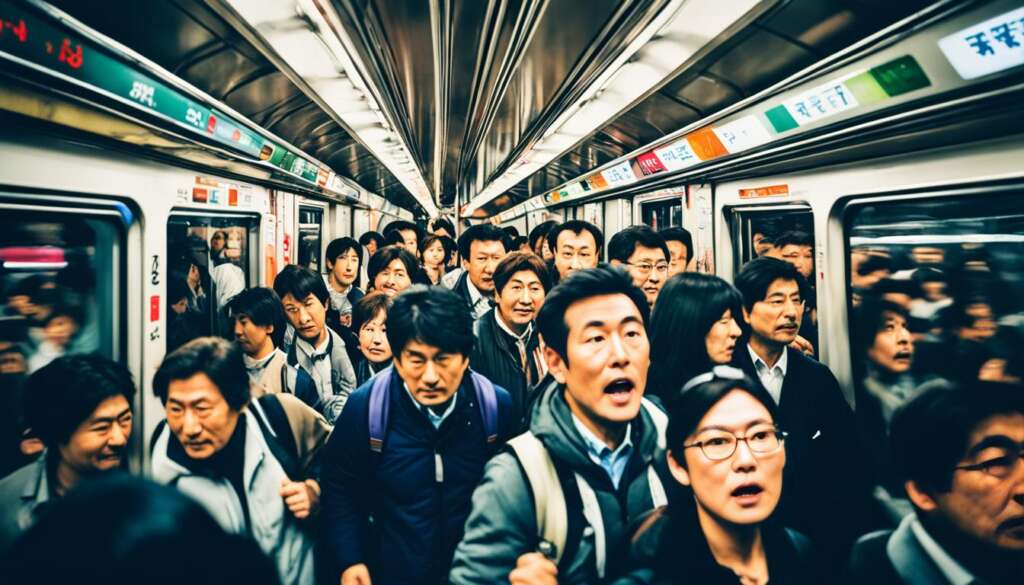Introduction
The Japan Public Transport system stands as a worldwide leader for timetable accuracy along with top-class cleanliness and convenient access for all users including visitors. Traveling across Japan’s transportation network creates an adventure for all visitors regardless of whether they conduct business or engage in tourism because it connects traditional with modern elements.
Self-improvement:
Travelers seeking an easier and enjoyable experience should focus on learning basic Japan Public Transport skills.
Master the Practices of Japan’s Transportation Networks
Japan operates public transit by means of trains followed by buses together with subways each accommodating specific routes. Two major transport options exist for city-to-city travel through Japan: Japan Rail operates its Shinkansen bullet trains and regional buses along with subways serve the cities. The right choice of transportation makes it effortless to move between Japanese urban areas towards countryside destinations.
Tourist to use JR Pass
The usage of JR Pass becomes more affordable when tourists plan to travel through extended distances using Japan Public Transport. The JR Pass enables Japanese train access through no-cost transportation on JR lines unless specifically excluded from the Shinkansen lines. Mastering JR Pass utilization will enhance your Japanese journey because it enables convenient country-wide movement.
Usual Advice to Enhance the Trip on Japanese Train and Bus
Public transportation in Japan mandates the importance of giving space to others when using the system. The appropriate list of expected behaviors consists of mainstreaming passengers together with equal consideration for seating areas designated for elderly and disabled people. Observing Japanese customs during travel will deliver a more satisfying experience by making Japan’s public transport system more agreeable.
Navigating Major Cities of Japan through Public Transport requires knowledge of the reasons behind methodology.
The Japanese government invested heavily in developing public transportation which now serves all population areas of Tokyo, Osaka and Kyoto through buses and subway networks. Every visitor must be aware of the Tokyo rush hour and the way tourism affects Kyoto to navigate effectively in these cities. Working in advance allows Japanese public transport to become an effortless non-stressful method for city travel.
Safety and Accessibility in Japan’s Public Transportation
People traveling through Japan can experience one of the highest levels of security and convenience in public transportation systems. The physical disability accessibility includes ramps and elevators along with multilingual symbols that guide the disabled through stations and tunnels and trains. Japan’s Public Transport receives high quality assurance standards because of which families and all individuals including those with special needs and disabilities should use it.
An Outline of IC Cards as Used in Japan Public Transport
The transport system of Japan utilizes the IC cards called The Suica and Pasmo to enable touch-free card services for effortless public transport travel. The cards serve multipurpose function because they work on trains and most buses along with several items at convenient stores. Use of an IC card establishes a functional replacement for standard tickets because users must utilize it during their vertical travel inside Japanese public transit networks.
Useful Suggestions on Taking Japan’s Public Transport with Children
Going through important travel tips will help families avoid staying away from Japanese public transportation while enabling them to enjoy their commute. Bushelters designate particular areas which families can occupy and trains provide elevators as part of their available facilities. Japan’s Public Transport becomes enjoyable for children when you follow this approach.

| Airport | Transportation Options | Key Features |
|---|---|---|
| Haneda Airport | Airport Limousine Bus | – Direct transfers to central Tokyo – Comfortable seating and luggage space |
| Keikyu Line | – Fast connections to various Tokyo locations – Convenient for quick transfers |
|
| Narita Airport | Narita Express | – Fast connections to Tokyo destinations – Comfortable and convenient |
| Keisei Skyliner | – High-speed transfers to Tokyo – Modern amenities and comfortable seating |
Stress-Free Seasons to Use Japan’s Public Transportation
One should use Japan’s Public Transport at times outside rush hours because this period doesn’t have heavy traffic particularly during morning and evening hours. The congestion of Tokyo’s massive population reaches its peak during rush hours which creates an intense stress on visitors arriving in the city. Social travel during non-peaking hours enables visitors to bypass crowded situations for enhanced comfortable travel on Japan’s Public Transport.
Plan your visits to Japan through Public Transport during non-peak commuter hours.
Cities throughout Japan provide excellent day-trip locations which you can easily reach by using the Public Transport system to get to towns like Nikko, Kamakura or Nara. Public transport systems enable travelers to visit multiple destinations without needing a car rental while providing swift train transport to areas in Japan. Public Transport in Japan proves effective for reaching every aspect of Japanese territory which includes urban centers and rural settlements.
Basic Apps for Japan’s Public Transits
For making the best of Japan’s Public Transport the available applications are Navitime Japan Travel for Tourist and JR-EAST Train Info. The mentioned apps show train schedules and the vehicles’ paths while sending alerts about service irregularities. The tools help you stay updated so you get better results from Japan’s Public Transport services if you don’t know the system well.
Basic Cultural Manners on Governing Public Transport in Japan
This examination will study various customs concerning public transportation in Japan which native people follow. All travelers need to maintain a culture of studying their voices and mobile devices to obtain peaceful behavior during their journey. Stricter adherence to these social practices allows people to create satisfying interactions that upgrade the public transportation experience in Japan.
Analysis of the Trains Operated by Japan Public Transport
Different types of trains constitute Japan public transport including local, Rapid, and express trains whereas each type operates at unique speeds alongside various station stop schedules. The local call trains make stops at every station which makes them less preferred than the rapid and express trains. Both train knowledge and selection play an essential role for achieving maximum public transport benefits in Japan.
In Japanese Public transport one can find buses operating as transportation vehicles.
Coaches operate as integral parts of Japan Public Transport System mainly in transportation areas with limited rail system coverage. These vehicles serve destinations inaccessible by train services and customers traveling to mountain areas effectively. The proper understanding of bus routes and stop-over locations allows for better convenience during your use of the Japanese Public Transport network.
Japan’s public transport useful tips for luggage is the main focus of this page
Public Transport users in Japan must carefully store their bags using provided compartments or sitting space on train seats. The majority of stations provide coin lockers accessible for short-term storage which enables users to move freely with both hands. Because of short transit periods within Japan’s Public Transport system we should carry only essential items.
Special reference to Japan
Special attention will be given to public transport dining alongside drinking activities with focus on Japanese practices during this study.
Only long-distance train and bus passengers can consume food items and drinks apart from local routes. The public transit system of Japan provides travelers with the experience of trying bento boxes that are known locally as ekiben at main stations together with longer transit routes. One can achieve satisfactory compliance for Japan’s Public Transport by honoring their dining customs.
The public transport system in Japan
The public transport system in Japan does not appeal to me during individual road trips.
Being on your own on Japan Public Transport should be trouble-free because Japan maintains low crime rates and provides several helpful people throughout the country.
Most stations maintain personnel presence apart from having English information areas which people can use to seek guidance. So those who travel alone can find their journeys through Japan’s Public Transport system very pleasurable because of this assistance.
Blind and the deaf in Japan:
The public transport system for hearing and vision-impaired users in Japan makes use of visual indicators
Physical challenged clients can access specific accommodation elements throughout Japan’s Public Transport system including lift access and ramps as well as wide ticket widths. The facilities of these buses include both priority seating and dedicated wheelchair-friendly sections in the back coach area. All population groups with diverse physical disabilities can use the amenities of Japan’s Public Transport system.
Traveling across Japan through its transportation system leads to exploration of different areas.
The transport network extends across every area of Japan and provides service for Hokkaido and Okinawa as well as the scenic Kyushu territory. Travelers at local passenger lines experience longer routes passing through mountains and coastlines which make them ideal for sightseeing in tourist locations. People who wish to travel across Japan slowly during this year will find Japan’s Public Transport providing access to rural region vistas.
A Guide to Dealing with Delays on Japan’s Public Transport
Japanese Public Transport maintains a record of reliability but strong weather conditions together with disordering elements can still disrupt scheduled operations. When timetable disturbances occur passengers receive announcements which may use English language at major stations. People should use additional information sources to stop typical inconveniences when using Japan’s Public Transport while preparing themselves for such situations.
Experience of commuting in Japan via its public transport
All in all Japan’s public transportation system presents an excellent method to travel throughout this country even though it requires some changes. The Shinkansen railway system fulfills the requirement for efficient fast transportation and city buses create their own agreeable urban commuting system. Using Japan’s Public Transport allows us to conserve time and money and simultaneously experience the typical Japanese everyday life and cultural aspects.
Conclusion:
The research assesses Japan’s Public transport systems regarding their readiness to provide efficient service.
Visitors can explore Japan by Public Transport because it enables convenient and cost-efficient movement throughout the country sustainably. The system operates without any difficult procedures.



